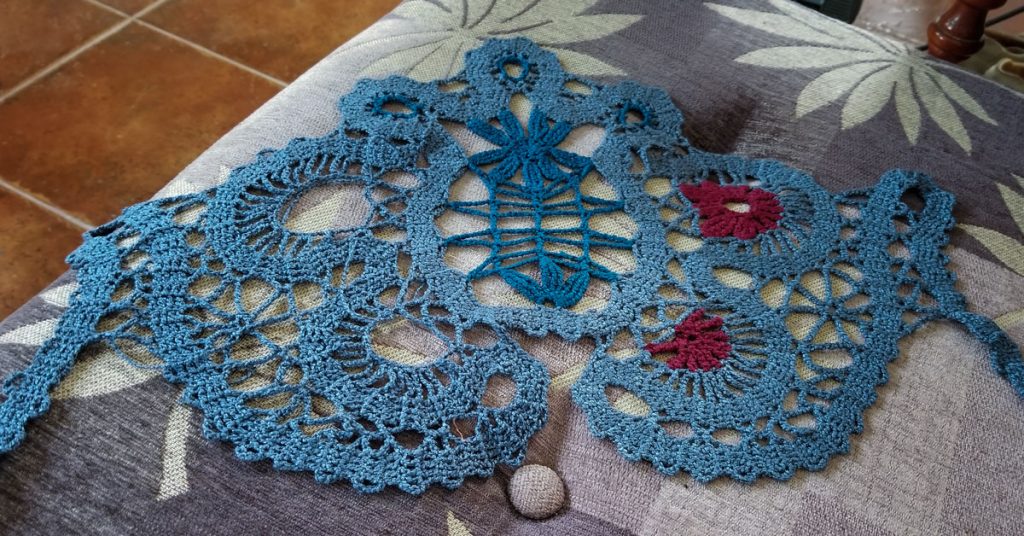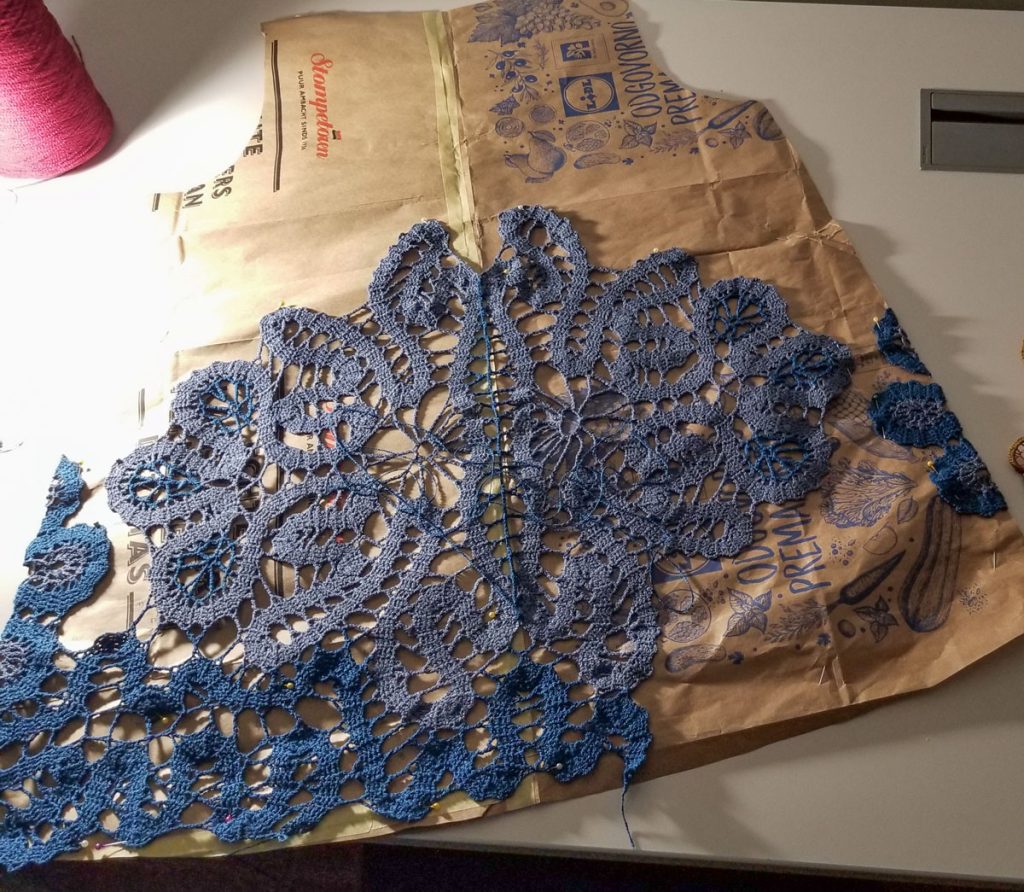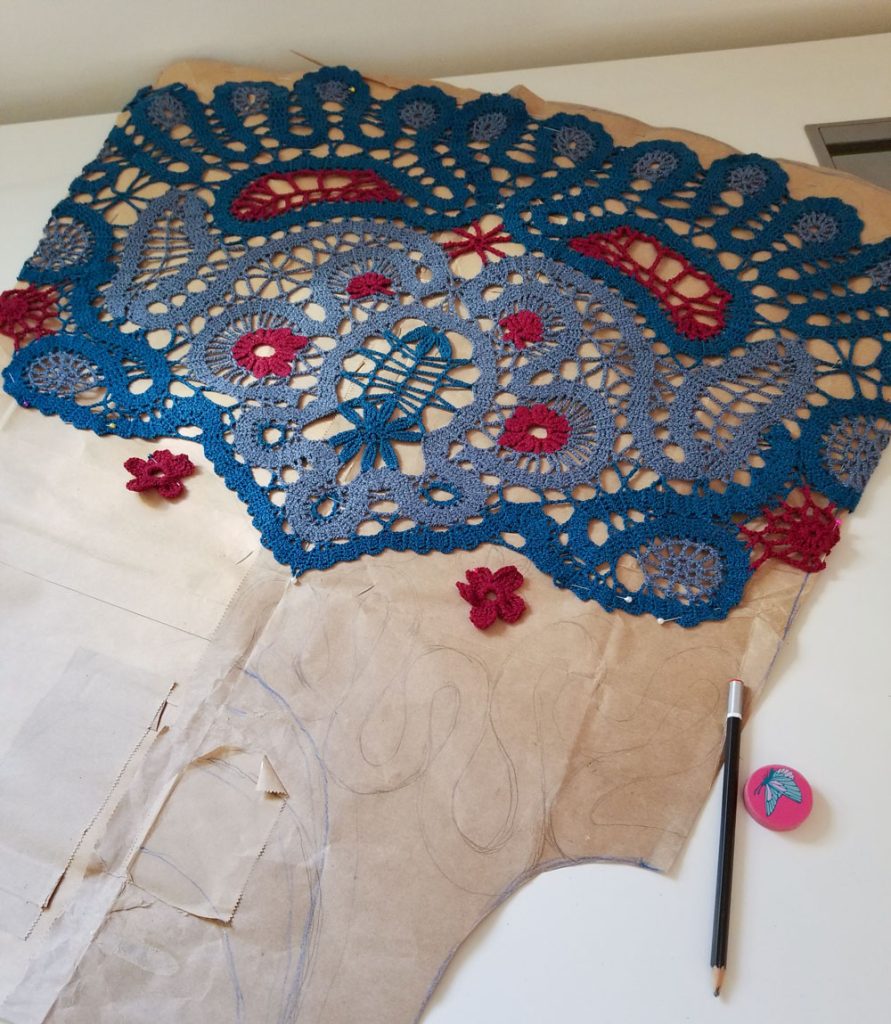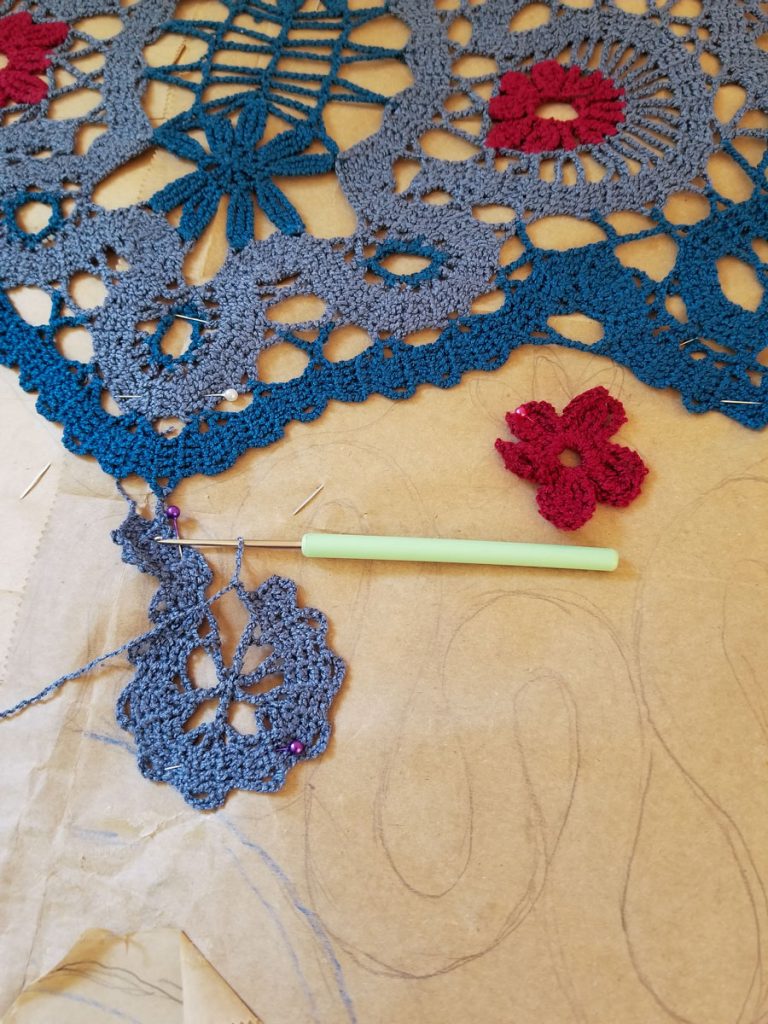I always admired the art of bobbin lace, but knew that likely I would never get to do it, as it seems too time consuming, confusing and hard to come across good instruction, as it isn’t a very popular craft. There is a type of crochet that mimics the look of the Bruges lace, a type of bobbin lace making originating in Belgium, but the crochet version isn’t as intricate and detailed as the bobbin lace, yet could look quite interesting and beautiful.
While I was visiting my parents in Serbia, I decided to give this style of crochet a try. I was looking online at Russian magazine Duplet, full of beautiful crochet with schematic patterns, which I love, since I have a hard time working with American style written crochet instructions full of acronyms – that does not work for me. After browsing Дуплет Брюггское кружево I got inspired to give it a try, as I’ve never done Bruges lace crochet before. I didn’t immediately know what it was going to be, but I picked the rayon (viscose) and cotton blend thread that has a nice weight to it and drapes beautifully. After completing the first motif, which was supposed to be just a section of a larger doily, I did not feel like stopping, as I got into the swing of things and it was fun, so I figured I would make a tunic out of it. Then, I made a pattern on joined paper bags, based on my measurements and length that seemed appropriate. Here’s what that looked like:


Then, I began doing two more motifs from the magazine page printout – more precisely, it was one and the same motif done twice in order to be mirrored across the middle of tunic’s back side, like so:

As you can see, the motif from the front side is getting wrapped around to the back side and it’s pinned onto the paper. I realized that the only way to continue is to begin making up my own design, so that I can fill in the rest. Since everything was mirrored across the center, I would have to replicate the left side over to the right, or vice versa. What I ended up doing to ensure symmetry was writing down onto the paper pattern the number of chains or crochets that were used to connect the winding strips. The basic pattern for strips is always the same: 4 double crochets, five chains, turn work around and repeat. In cases where the strip is making a turn and/or connecting to already completed sections, the middle of 5 chains would be instead a crochet (single, double, triple, quadruple etc), which is what I would write down, as it could be hard to tell if a connection is a double or triple crochet. Another thing that I quickly realized was that this improvisational work really needed to be done in a pin-along fashion, with completed parts steam ironed, pinned down and fixed, and work in progress being pinned down as it was completed, because otherwise there was a risk of creating sections that would be bunched up or too stretched. The middle image below shows how soon I would insert the pins into newly completed strip:



As you can see, I planned out where the strips would go by drawing them on the paper and using the drawing as a guide. The red flowers were not included in the end, since the red yarn was a bit thicker and I didn’t feel like using it anymore, plus it isn’t quite right to crochet connections between sections apart from the winding strips: they can look awkward and out of place, and the only areas where I had that was in between the big front motif and the two mirrored motifs on the back. Ideally, the connections between those would be made as part of the two mirrored motifs, and not separately. Here’s the completed work:


I was thinking of making sleeves as well, but our trip to Serbia was coming to an end, so I brought home some extra yarn. I’ll likely make something else with it though. When the summer comes back, I’ll have some pictures to add of me wearing it, but that’s it for now. Hope this helps anyone wishing to do Bruges lace crochet – just be careful, because you might get hooked! 🙂